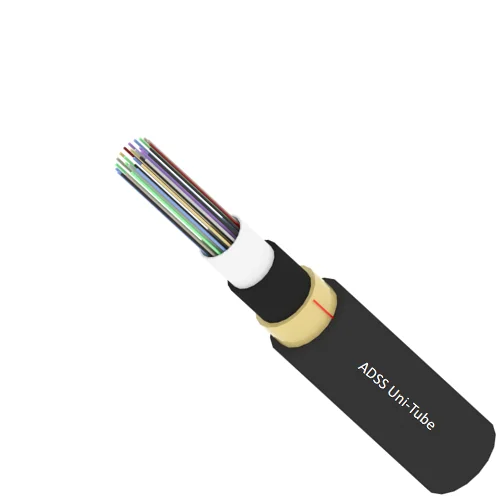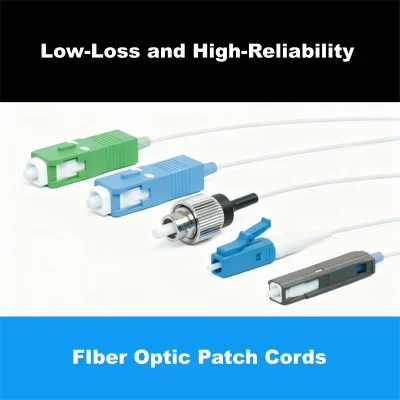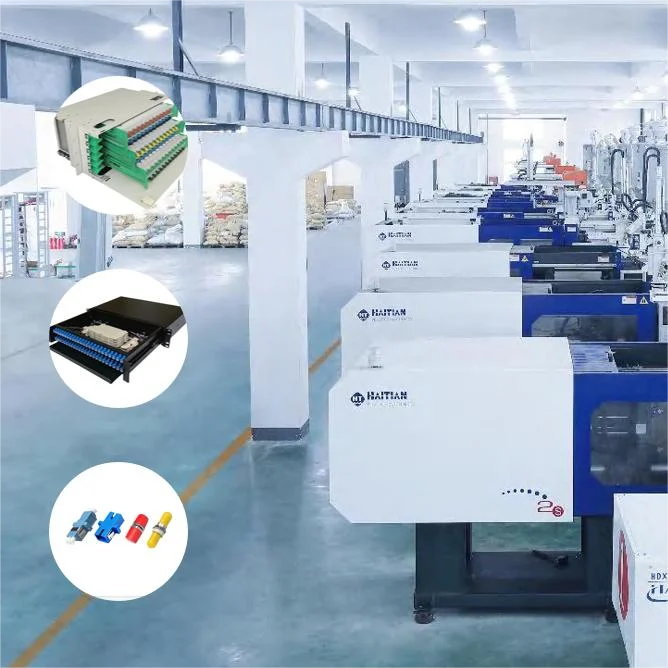Application
- Building A, Republic International Business Plaza, No. 3699 Gonghexin Road, Jing'an District, Shanghai
- +86-21-59175887
- market@soctfiber.com
- 86-17321363317
- 86-13341796231
Data Center
How Are Fiber Optic Cables Revolutionizing Data Center Performance?
Data centers struggling with massive data flows? Old copper cabling creating bottlenecks? Fiber optics provide the high-speed, reliable infrastructure essential for modern data demands.
Fiber optic cables revolutionize data centers by offering unparalleled speed, bandwidth, and density. They enable efficient handling of enormous data volumes, crucial for cloud computing, AI, and big data applications, ensuring optimal performance.

I’ve seen many technological shifts in my career. The way data centers operate today is vastly different from even a decade ago. The sheer volume of information they handle is mind-boggling. When I first explored how fiber optics were becoming the standard, it was clear they were solving some huge challenges. Let’s look at why these tiny strands of glass are so vital for the heart of our digital world.
Why Is Blazing Speed So Critical Inside Today’s Data Centers?
Are your data center applications lagging? Traditional copper struggling to keep up with data tsunamis? Fiber optics provide the immense bandwidth needed for today’s data-hungry services.
Fiber optics are critical for data center speed because they transmit data as light pulses. This allows for significantly higher bandwidth and faster data transfer rates compared to copper, essential for real-time processing.

When I think about a modern data center, I picture a busy digital city. Information is constantly moving. Applications like cloud services, artificial intelligence (AI), and big data analytics demand incredible speed. I’ve worked on systems where even a millisecond delay could impact performance. That’s why the choice of cabling inside a data center is so important. It’s the road system for all that data traffic.
The Unmatched Throughput of Fiber
Copper cables, like Cat6 or Cat7, have served us well. But they have physical limitations. As you try to push more data faster, the signal weakens. It also becomes more susceptible to noise, especially over longer distances within a large data hall. Fiber optics, on the other hand, send data as pulses of light. This fundamentally allows for much greater amounts of data to be sent much faster, and over longer distances without significant loss.
Let’s compare typical performance:
| Feature | High-End Copper (e.g., Cat8) | Fiber Optic (e.g., OM4/OM5, OS2) | Impact in Data Centers |
|---|---|---|---|
| Typical Max Bandwidth | Up to 40 Gbps (short distances) | 100 Gbps, 400 Gbps, and beyond | Supports massive data throughput between servers, storage, and switches. |
| Distance for Max Speed | ~30 meters for 40 Gbps | Kilometers (single-mode fiber) | Enables flexible data center layouts, including larger facilities. |
| Signal Degradation | Higher over distance | Much lower over distance | Consistent performance across the data center. |
| Future Scalability | Limited by physics of copper | Easier to upgrade to higher speeds | Protects investment as data demands grow. |
I’ve seen data centers evolve from supporting basic web hosting to powering complex AI model training. The demand for bandwidth has just exploded. Fiber optics provide the headroom needed not just for today, but for the applications of tomorrow. This speed is vital for inter-server communication, connecting to storage area networks (SANs), and linking different parts of the data center, like in spine-leaf architectures. It ensures data gets where it needs to go, quickly.
How Do Fiber Optics Help Squeeze More into Less Data Center Space?
Running out of room for cables in your racks? Managing bulky copper becoming a nightmare? Fiber optics offer a much smaller, lighter solution, enabling incredible density.
Fiber optic cables help with data center density because they are significantly smaller and lighter than copper cables. This allows for more connections in limited spaces, improving airflow and simplifying cable management.

Space is always a premium in data centers. Every square foot costs money – for the building, for power, for cooling. I’ve walked through many data halls, and one common challenge is cable congestion. Traditional copper cables, especially those designed for higher speeds, can be quite thick and rigid. This makes routing them difficult and can quickly fill up pathways and racks. This is where fiber optic cables offer a huge advantage.
Smaller Cables, Bigger Possibilities
A fiber optic cable carrying multiple strands is often much thinner and more flexible than a copper cable bundle with similar data-carrying capacity. Think about it: a single fiber strand is about the thickness of a human hair, yet it can carry enormous amounts of data. Even with protective jacketing, fiber cables take up far less physical space.
Here’s how this impacts data center design and operations:
| Aspect | Bulky Copper Cables | Slim Fiber Optic Cables | Benefit for Data Centers |
|---|---|---|---|
| Cable Size | Larger diameter, less flexible. | Much smaller diameter, more flexible. | Easier to install, route, and manage in crowded racks and pathways. |
| Rack Density | Limits the number of connections per rack unit (RU). | Allows for significantly higher port density on switches and patch panels. | More compute and storage power in the same physical footprint. |
| Airflow | Can obstruct airflow, leading to cooling inefficiencies. | Minimal obstruction to airflow. | Improved cooling efficiency, potentially lower energy costs. |
| Weight | Heavier, can strain cable trays and raised floors. | Much lighter. | Less structural load, easier handling during installation. |
I recall a project where a data center was upgrading its network. The sheer volume of new copper cables required would have created serious airflow problems and made future maintenance a headache. By switching to fiber for their high-speed links, they not only got the performance they needed but also dramatically improved the neatness and serviceability of their racks. This ability to pack more connectivity into less space, while also improving vital aspects like cooling, is a game-changer for efficient data center operations and scalability. It means you can grow your capacity without necessarily growing your physical footprint at the same rate.
Why Is Signal Purity So Essential for Data Center Reliability?
Worried about data errors and system crashes due to interference? Electrical noise is a constant threat with copper. Fiber optics are immune, ensuring clean signals and rock-solid reliability.
Fiber optics are essential for data center reliability because they are immune to electromagnetic interference (EMI) and radio frequency interference (RFI). This ensures signal integrity, reduces data transmission errors, and improves uptime.

Data centers are electrically noisy environments. You have rows upon rows of servers, power supplies, cooling systems, and uninterruptible power supplies (UPS). All these devices can generate electromagnetic interference, or EMI. I’ve seen situations where this electrical “noise” can cause big problems for traditional copper data cables. It can corrupt data, lead to retransmissions, slow down performance, and in worst-case scenarios, even cause network outages. This is a major concern when uptime and data integrity are paramount.
The Advantage of Light Over Electricity for Signal Integrity
Fiber optic cables transmit data using light pulses. Light is not affected by EMI or RFI. This is a fundamental advantage over copper cables, which transmit electrical signals that can be disrupted by external electromagnetic fields. Maintaining a clean signal is crucial for preventing bit errors – tiny mistakes in the data transmission that can accumulate and cause significant issues.
Here’s why EMI immunity is so vital:
| Challenge in Data Centers | Impact on Copper Cables | Fiber Optic Advantage | Result for Data Center Operations |
|---|---|---|---|
| EMI/RFI from Equipment | Can induce noise, leading to data corruption, bit errors. | Immune to all forms of electromagnetic interference. | Cleaner data signals, extremely low bit error rates (BER). |
| Grounding Issues | Susceptible to ground loops and potential differences. | Being dielectric (non-conductive), eliminates ground loops. | Increased system stability, easier installation. |
| Crosstalk | Signals in adjacent copper cables can interfere. | No crosstalk between fiber optic cables. | Denser cable installations without signal degradation. |
| Security | Copper signals can sometimes be tapped electromagnetically. | Very difficult to tap light signals without detection. | Enhanced data security for sensitive information. |
I remember consulting for a financial institution where data accuracy was absolutely non-negotiable. They were experiencing intermittent network issues that were hard to trace. After extensive analysis, a significant portion of the problems was attributed to EMI in their densely packed server rooms affecting copper links. Migrating their critical backbone connections to fiber optics largely resolved these issues. For any data center manager, the reliability and “cleanliness” of fiber optic signals mean fewer headaches, more consistent performance, and greater confidence in the integrity of the data being processed and stored. This contributes directly to higher availability and a more robust infrastructure.
Conclusion
Fiber optics are indispensable in modern data centers. They deliver the speed, density, and reliability needed to power our increasingly digital world, ensuring seamless and efficient operations.
Related Products
No results found.




